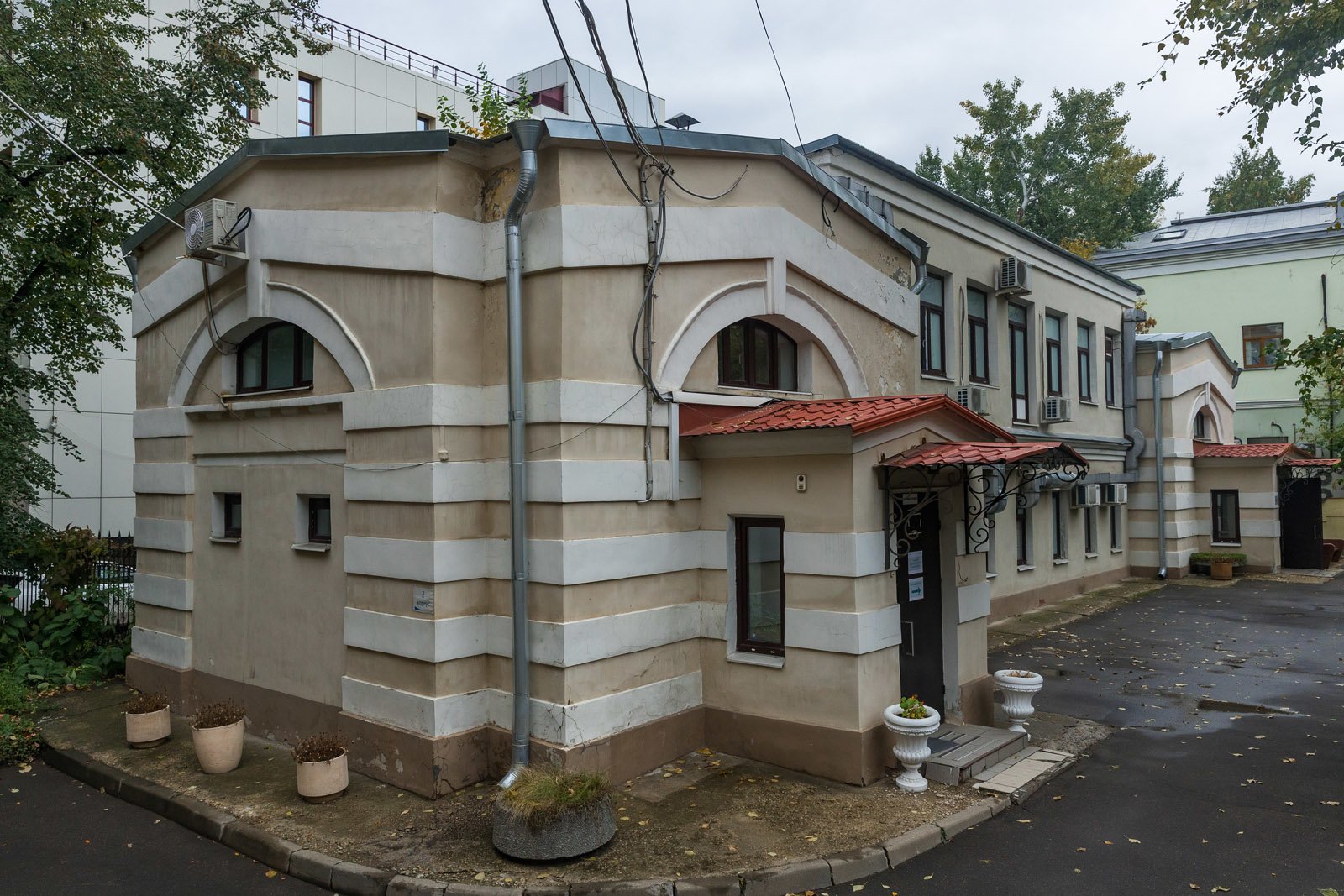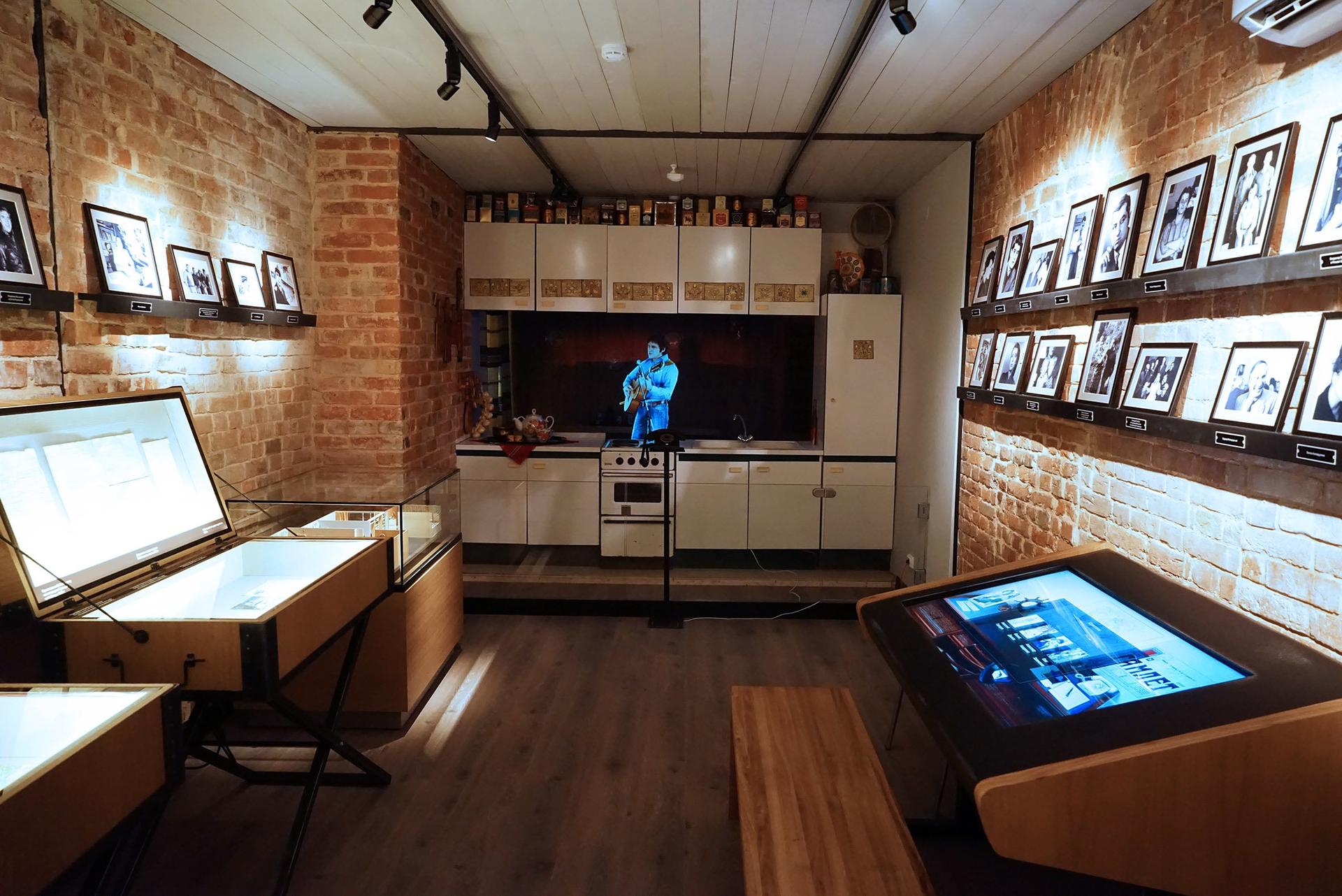Флигель – органичная часть городской усадьбы Андре, которая описана во многих авторитетных справочниках как один из лучших памятников архитектурной неоклассики в Москве. Флигель возник чуть позже Главного дома усадьбы – в 1915 году. Он был построен тем же зодчим – Сергеем Флегонтовичем Воскресенским, братом другого известного архитектора – Флегонта Флегонтовича Воскресенского.
Сергей Флегонтович Воскресенский в начале XX века был очень востребован частными заказчиками – застройщиками доходных домов. Наиболее известен его дом на Покровском бульваре, 4 (ныне находится в ведении ГлавУпДК при МИД России). Он также перестраивал церкви. Крупнейшая сохранившаяся его храмовая постройка – колокольня храма св. Николая Чудотворца на Долгоруковской улице. В 1922 году Воскресенский был привлечен к уголовной ответственности вместе со священником церкви Иоанна Воина на Божедомке Голубевым и диаконом Успенским. Причиной стало «открытое произнесение … с амвона церкви Иоанна Воина в период изъятия церковных ценностей проповеди контрреволюционного содержания, призывающей массы к выражению недоверия деятельности органов Советской власти». Несмотря на этот инцидент и открытое неприятие новой власти, Сергей Флегонтович продолжил профессиональную деятельность и даже занимался ремонтом Большого и Малого театров. Похоронен в Донском монастыре.
Семейство потомственных дворян Андре, не подозревая того, стало заложником «большой истории». Казалось, что неоклассическая дворянская идиллия на тихой московской улочке может длиться десятилетиями, но исторические бури уже надвигались на страну и столичный город. В отстроенной с любовью усадьбе на Гончарной улице семье Андре удалось пожить совсем недолго: в 1918 году ее национализировали новые коммунистические власти. Флигель, как и Главный дом, в советское время использовался медицинскими учреждениями.
Флигель городской усадьбы Андре на Гончарной улице представляет собой двухэтажное, с пониженными боковыми ризалитами здание. Фасад украшен венчающим карнизом и горизонтальными широкими тягами. Окна – полуциркульные с замковыми веерными камнями.
Флигель, как и Главный дом усадьбы, – объект культурного наследия регионального значения.
In the early 20th century, Sergey F. Voskresensky was very popular with private customers — tenement developers. The most famous building constructed to his desing is at 4, Pokrovsky Boulevard (nowadays held by GLAVUPDK — a commercial organization servicing diplomatic missions and subordinate to the Ministry of Foreign Affairs of Russia). Architect Voskresensky also made reconstruction designs for churches. The largest survived church building to his design is the belfry of the St. Nicolas the Wondermaker on Dolgorukovskaya Street. In 1922, Voskresensky, along with priest Golubev of the John the Warrior Church at Bozhedomka and deacon Uspensky were prosecuted. They were charged with "open delivery of a counter revolutionary sermon from the dias at the John the Warrior Church, urging the public to express distrust of the Soviet Power’s actions". Despite that incident and his open resentment against the new rule, Sergey Voskresensky continued his career as architect and even was involved in reconstruction of the Bolshoy and the Maly Theaters. Voskresensky was buried in the Donskoy Monastery.
The noble family of Andre left their mark in history without even knowing it. It seemed to them that their idyllic life in the neoclassical homestead on a quiet Moscow street would last for decades; however, the throes of history were just around the corner: both for Moscow and the entire country. The Andre family had very short time to live in their beloved homestead that they had just built for them: in 1918, Bolsheviks nationalized the property. In the Soviet times, the Outbuilding — just like the Main House — was used for medical institutions.
The Outbuilding of the Andre city homestead on Goncharnaya Street is a two storey building with lower side avant corps. Its facade is decorated with a final cornice and broad string cornices. Windows have semicircular shape and fan shaped keystones.
The Outbuilding — just like the Main House of the homestead — is a cultural heritage site of regional significance.
Yevgenia Tvardovskaya








%20BEL_0521.jpg&w=1920&q=75)












